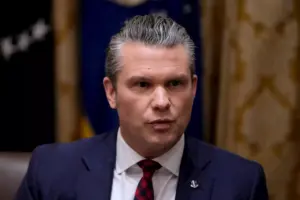
Recent financial disclosures reveal that Sentara Health System incurred a staggering loss of $1.5 billion on health insurance ventures, a figure detailed in its 2024 audited financial statements. Among the losses is Sentara Holdings Florida, an HMO acquired for $225 million in December 2022, which subsequently lost $290 million in just two years. Critics argue that this substantial financial setback underscores a need for more investment in the local community of Hampton Roads, where the profits were originally generated.
While Sentara has committed to investing $35 million annually over ten years into the Macon and Joan Brock Virginia Health Sciences Center at Old Dominion University, many feel that this contribution is insufficient given the scale of its recent losses. Community leaders have expressed disappointment, noting that the funds should have been allocated much earlier to address pressing local health needs.
Jane Batten, a prominent local philanthropist, recently emphasized the importance of reinvesting profits back into the community. “When you make money in a community, you give it back to that community,” she stated, highlighting a sentiment that many share regarding Sentara’s financial decisions.
Potential Investments to Address Local Health Concerns
Imagining what $1.5 billion could achieve in Hampton Roads opens up numerous possibilities. For instance, a dedicated $500 million endowment could provide full tuition scholarships for over a hundred new doctors and nurses each year. This investment would not only alleviate the significant doctor shortage in the area—previously projected by Old Dominion University as a deficit of 1,000 doctors—but also ensure that graduates commit to serving the local population, which has struggled to access primary care and specialty services.
Additionally, a similar investment in research could yield significant benefits. With $500 million directed towards teams at Eastern Virginia Medical School and Old Dominion University, the region could foster nationally recognized discoveries. These findings would enhance regional prestige and contribute to economic growth, particularly when compared to larger institutions like the University of Virginia and Virginia Commonwealth University that currently attract more research funding.
The remaining funds could be managed by a community board, comprising leaders from local educational institutions and community representatives. This board would be tasked with reviewing and funding initiatives aimed at improving health outcomes and economic conditions in the region.
Sentara’s Financial Strategy Under Scrutiny
As Sentara grapples with the aftermath of its financial missteps, there is a growing expectation that the organization will learn from its experience. With over $7 billion in cash and investments accumulated over the years, primarily from its hospitals in Hampton Roads, community stakeholders are urging Sentara’s leadership to reassess their priorities.
In 2024 alone, Sentara reported profits of $717 million, benefiting from a favorable market environment with minimal competition. Hospitals in the region have enjoyed profit margins averaging 16.8%, significantly higher than the less than 4% margin reported by Sentara facilities elsewhere in Virginia.
Community members are calling on Sentara to align its actions with its mission statement: “We improve health every day.” There is a clear demand for a shift away from risky investments in underperforming facilities and insurance ventures towards substantial contributions that address the urgent health needs of Hampton Roads.
As discussions continue regarding Sentara’s future direction, local leaders remain hopeful that the organization will recognize its responsibility to the community that has supported it for years. The challenge now lies in ensuring that the profits generated are reinvested in ways that truly benefit the residents of Hampton Roads.







